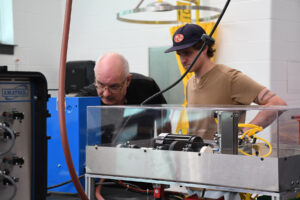
Wor-Wic Community College has received a $350,000 Advanced Technological Education (ATE) grant from the National Science Foundation, the U.S. government’s independent science agency.
The three-year grant will fund the college’s Eastern Shore Technician in Electro-Mechanics (ESTEEM) project, which will test Wor-Wic faculty members’ ideas to improve technician education and help to grow the program, which provides students with skills vital to the Lower Shore workforce.
“We are excited to receive this ATE grant to ensure we can best prepare our students for the needs of our local employers and support economic vibrancy within our communities,” said Deborah Casey, Ph.D., president of Wor-Wic. “One of our strategic priorities is to improve institutional effectiveness through a high-quality workforce, and this funding will assist the college in accomplishing our mission.”
The ESTEEM project at Wor-Wic will address barriers and provide solutions to encourage student success and achievement.
“We are looking at scheduling, such as making sure labs are available for students with demanding schedules, and considering what kinds of scheduling works for students who can’t enroll in traditionally scheduled courses,” said Joe Roche, applied technologies department head and associate professor of trades. “We are also looking into micro-credentials that divide coursework up into more manageable pieces and provide achievements along the way.”
The grant will also help fund some of the needed lab equipment. The Patricia and Alan Guerrieri Technology Center has learning systems for robotics, geothermal electricity, wind turbine nacelles and solar panels, a supply chain automation training and assessment device, an augmented reality welding simulation lab and other high-tech equipment essential for students’ education. Increasing access to such systems and tools will help more students build their skills – and skilled workers are needed in the community.
“One of our industry partners recently said they needed 20 electro-mechanical technicians and apprentices – and that was just one,” Roche said.
The ATE program focuses on the education of technicians who work in high-tech fields that drive the nation’s economy. Because two-year community and technical colleges are the leading sources of technician education in the United States, faculty from these higher education institutions have had leadership roles in most ATE projects since the program began in 1993.



